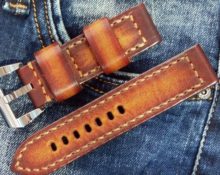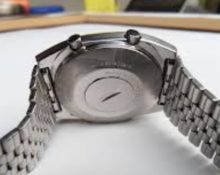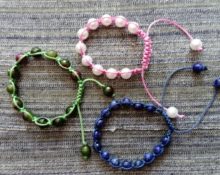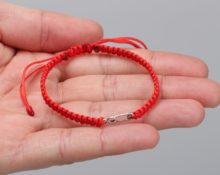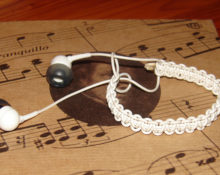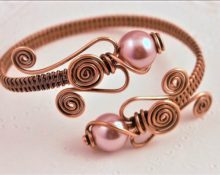Every lover of such an accessory as a watch has encountered the problem of an uncomfortable strap. It may be too long or short, inconvenient, or simply not to the liking of the watch owner. And if the length of the strap in most cases can be adjusted to the owner, then the external design is much more difficult to change. There are also frequent cases when the bracelet simply breaks or breaks. Then it becomes literally impossible to continue wearing the watch. And you have to take them to the workshop to restore or replace the bracelet.
But why again indulge in an endless search of various options, in search of the best, when you can make the most suitable strap for you with your own hands. This does not require special skills or knowledge, just a little patience and imagination. A homemade bracelet will also be an excellent gift, in which you can add not only functionality, but also details that add personality to your gift.
IMPORTANT: Be careful when choosing materials, because it will constantly come into contact with human skin.And if chosen incorrectly, skin irritation may occur.
Photo examples of bracelets for men's watches
It would be a mistake to think that men's watch belts are all the same type and you cannot show your originality in them. Yes, men's accessories are not full of ribbons and rhinestones, but they contain much more subtle manifestations of originality. If you move away from functionality and set the goal to capture a man’s imagination. It is possible to go very far in creative flight, as in this version.
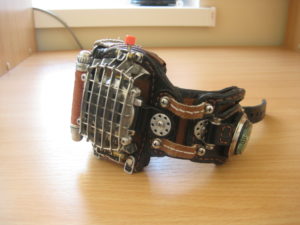
But if you need a simple functional replacement, then you can make a simple bracelet from fabric or rope. The advantage will be the ability to very accurately select the size and material. This will make the watch as convenient as possible for everyday use.
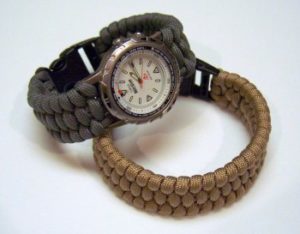
But also simple but elegant leather options will look great. The classic design is perfect for a formal suit, and the subtle details add elegance.
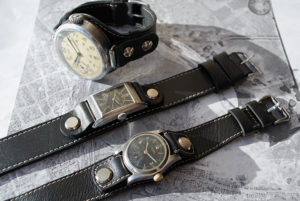
Another popular option are massive leather belts. Making them is no more difficult than regular ones, but they will stand out much more. And a person with such a bracelet will look very courageous.
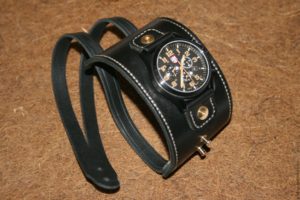
Master class: Milanese weaving of a watch bracelet
The Milanese grid style has gained considerable popularity recently. Similar to chain mail, Milanese mesh, while strong, retains the mobility of the links. This style is also perfect for any type of watch, both for the classic version and for more modern design solutions.
REFERENCE. The Milanese weaving style originated at the end of the 19th century in Milan, hence the name of this type of product.Then, jewelry craftsmen were fascinated by the luxurious appearance and high strength, and most importantly, the convenience of bracelets made by Milanese weaving.
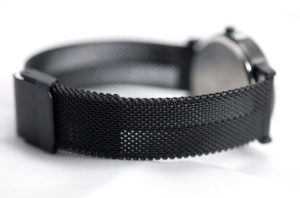 This type of product is a large, movable mesh. It retains strength and gives the skin at the point of contact almost free access to oxygen. This protects the skin from irritation, as well as the strap itself, from moisture stagnation in the internal parts of the structure. In hot regions, such a bracelet will be most valuable due to its “breathable” structure. For a better understanding, let us highlight the main distinctive features of Milanese weaving:
This type of product is a large, movable mesh. It retains strength and gives the skin at the point of contact almost free access to oxygen. This protects the skin from irritation, as well as the strap itself, from moisture stagnation in the internal parts of the structure. In hot regions, such a bracelet will be most valuable due to its “breathable” structure. For a better understanding, let us highlight the main distinctive features of Milanese weaving:
- Due to its texture, the belt has a large contact area. And high flexibility allows it to fit tightly to the skin of the hand. This allows you to hold it firmly on your hand.
- It is easy to polish and has virtually no inaccessible areas. With such a belt, it is extremely easy to maintain the original shine.
- The Milanese mesh is not afraid of water; due to its structure, it is easily ventilated and there is no stagnation of moisture in it.
- In places with a hot climate, due to its porous structure, such a product does not allow the skin to begin to rot.
- A universal style that fits practically every watch. In the modern world, there are a huge number of weaving variations, which allows you to create a design that suits even the most sophisticated customers.
The process of creating a Milanese weave takes only a few steps:
- A spiral is twisted from the wire, with a pitch between turns equal to the diameter of the wire itself.
- The resulting “spring” is cut into equal pieces of the required length.
- Then the segments are screwed into one another to create a mesh fabric.
- The last step is to cut and bend the edges so that the spirals do not fall apart and hold tightly to each other.
Despite the apparent simplicity of the process, it contains all the peculiarities of this type of mesh. The master must do everything perfectly so that the mesh is uniform over its entire area. And also to create uniqueness, there are a huge number of options for crimping and final processing of the product. And for such a rich variety, many masters liked this technology.


 0
0